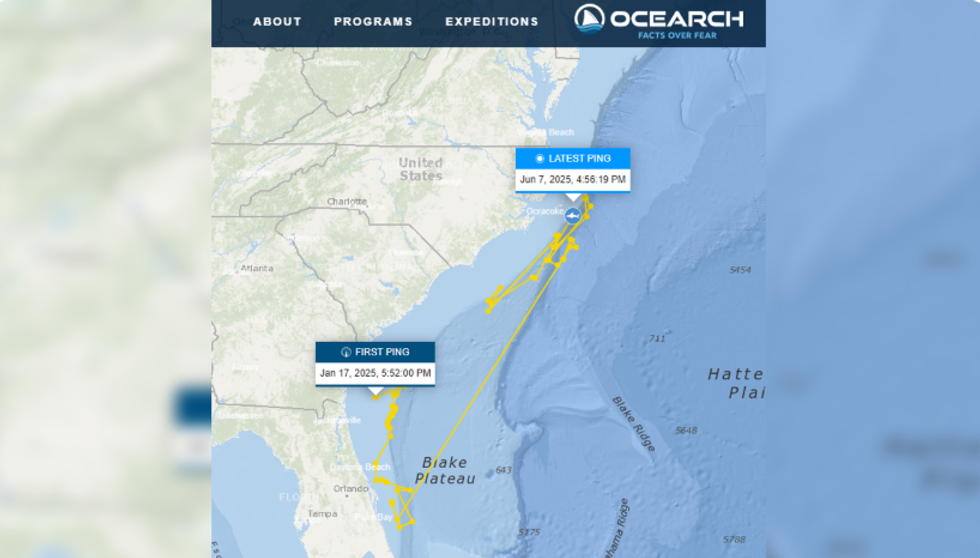With spring break just around the corner, it's time to lock in affordable trips and avoid inflated prices. Booking three weeks to a month in advance can help secure the best deals. Spring 2025 is shaping up to be a great time for travel, with airfares for international trips down by 3% and hotel rates decreasing by 2%, making it easier than ever to plan a memorable trip without breaking the bank. Here are seven top destinations to explore on a budget this spring.
1. Big Bear, California

Nestled in the San Bernardino Mountains, Big Bear is the perfect escape for nature lovers. This Californian gem offers a variety of outdoor activities like hiking, biking, and ziplining. For snow enthusiasts, Big Bear’s ski season extends into late March and early April, making it an excellent spot for spring skiing. Beyond the slopes, enjoy the tranquillity of the mountains and explore scenic trails. It’s also a budget-friendly option, especially if you're driving from nearby Los Angeles, which is only two hours away.
Budget Tip: Renting an Airbnb with a group can dramatically lower costs. For instance, a large seven-bedroom property sleeping 12 people can cost around £580 per night, making it just under £50 per person. If you're not skiing, spring activities like hiking are free or low-cost.
2. Las Vegas, Nevada

Known for its glamour and vibrant nightlife, Las Vegas is also one of the most affordable spring break destinations in 2025. With average flight prices around £160 ($201) from US cities, Las Vegas offers a world of entertainment. Whether you’re keen on catching a show, exploring the casinos, or simply soaking up the sun, Vegas has it all. The city's competitive hotel prices, driven by high availability, also allow for a wide range of budget-friendly options.
Budget Tip: You can find accommodation at the famous MGM Grand for around £70 per night. Make sure to explore the free shows and entertainment on the Strip, like the Bellagio fountain displays.
3. Tampa, Florida

If you're after turquoise waters and soft sandy beaches, Tampa is a must-visit. Airfares to Tampa average around £170 ($217), making it one of the more affordable destinations this spring. Spring is also the perfect time to visit the area’s renowned Manatee Viewing Center, where you can witness these gentle sea creatures up close. You could also take a detour to nearby Orlando for a mix of beaches and theme park fun, with flights to Orlando often cheaper than to Tampa itself.
Budget Tip: Opt for budget hotels or Airbnbs around Tampa’s outskirts for prices starting at £60 per night. Also, most of Tampa’s beaches are free to access, so your days can be spent lounging without extra costs.
4. Belize City, Belize

For a tropical getaway in Central America, Belize City offers a lot without high costs. Flights from the US to Belize start as low as £250 ($321), making it one of the best-value international destinations. Spend your time exploring the city’s historic sites or head off on excursions to the nearby Belize Barrier Reef or the Mayan ruins of Altun Ha.
Budget Tip: Accommodation costs are modest, with local guesthouses available for as little as £50 per night. Eating at local markets will give you authentic dishes like tamales and rice for under £7 per meal.
5. Cancun, Mexico

Cancun, while famous for its luxury resorts, is also a budget-friendly destination when planned right. With round-trip airfares from as low as £190 ($248) from Chicago, Cancun offers beaches, adventure, and vibrant nightlife at reasonable prices. Spend your time swimming, snorkelling, or simply enjoying the local cuisine.
Budget Tip: Opt for one of the many mid-range hotels like SLS Cancun, where rooms start at just over £100 per night. The local buses in Cancun are inexpensive, making it easy to get around on a budget.
6. San Juan, Puerto Rico

With flights down 11% this year, San Juan is an excellent budget option for those seeking a Caribbean escape. The city’s colourful streets, rich history, and pristine beaches offer a perfect mix of relaxation and exploration. With average round-trip flights costing around £315 ($401), it’s an accessible destination for spring travellers. Old San Juan’s cobblestone streets and historic forts are free to explore, making it an affordable adventure.
Budget Tip: Opt for affordable stays at boutique hotels or Airbnbs in Old San Juan, where you can find accommodations for around £70 per night.
7. Montréal, Canada

For a city break steeped in culture, art, and gourmet food, Montréal is the place to be. Airfares to Montréal average around £290 ($369) this spring, making it a fantastic international destination for those on a budget. With sugar-shack season in full swing during March and April, it’s the perfect time to sample maple-flavoured delicacies. Explore the city’s rich art scene by visiting the Montréal Museum of Fine Arts or warming up in the city’s quaint cafés.
Budget Tip: Accommodation prices start around £55 per night for budget-friendly options, and you can explore the city’s incredible public parks and attractions like Mount Royal for free.
















 Reservoir levels in the area dropped to around 62 per centGetty Images
Reservoir levels in the area dropped to around 62 per centGetty Images A yellow-level heat health alert has been issued for seven regionsGetty Images
A yellow-level heat health alert has been issued for seven regionsGetty Images Firefighters in areas such as Dorset and the West Midlands are on high alertGetty Images
Firefighters in areas such as Dorset and the West Midlands are on high alertGetty Images It increases the risk of flash flooding and water run-offGetty Images
It increases the risk of flash flooding and water run-offGetty Images UK winters have seen a decrease in frost days and snowfall over the past decadeGetty Images
UK winters have seen a decrease in frost days and snowfall over the past decadeGetty Images


 His most recent ping was on Saturday, 7 JuneOCEARCH
His most recent ping was on Saturday, 7 JuneOCEARCH He is the largest male great white shark tagged by OCEARCH in the Atlantic to dateOCEARCH
He is the largest male great white shark tagged by OCEARCH in the Atlantic to dateOCEARCH